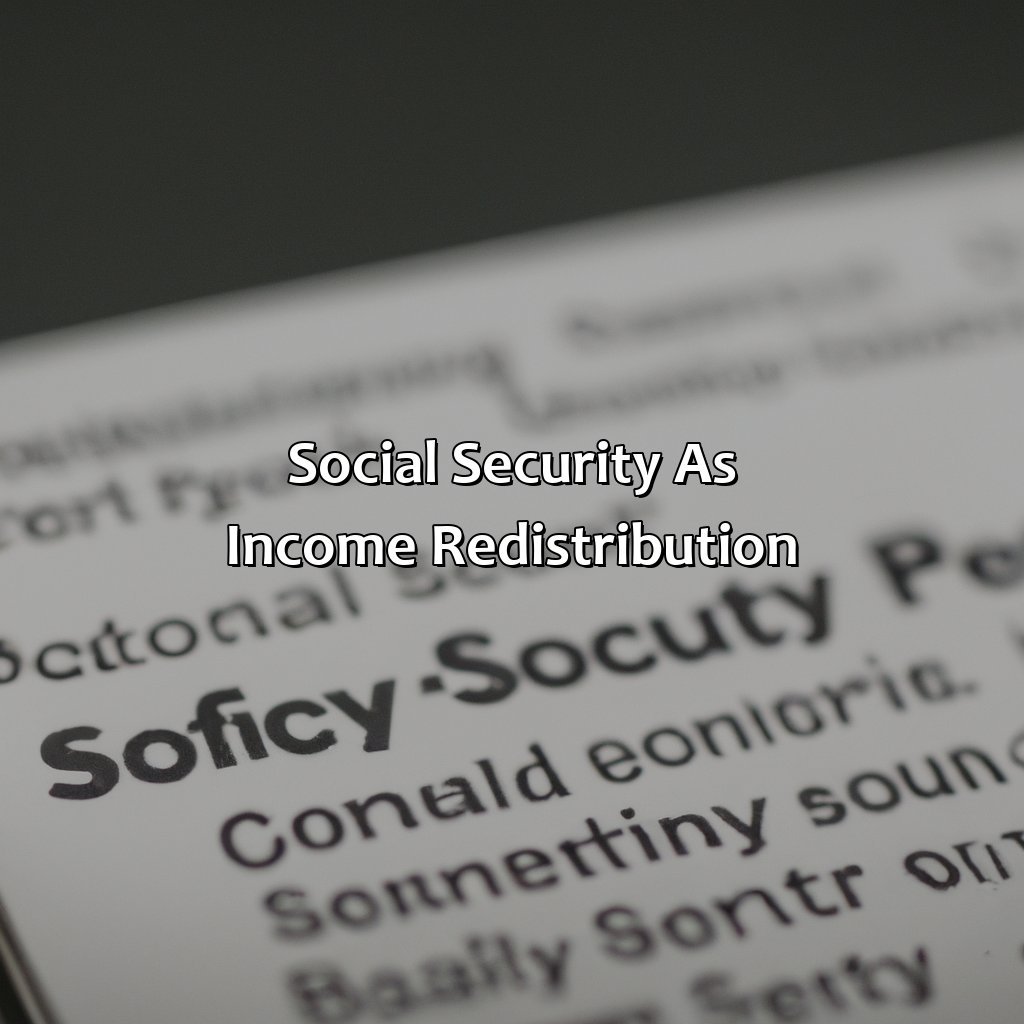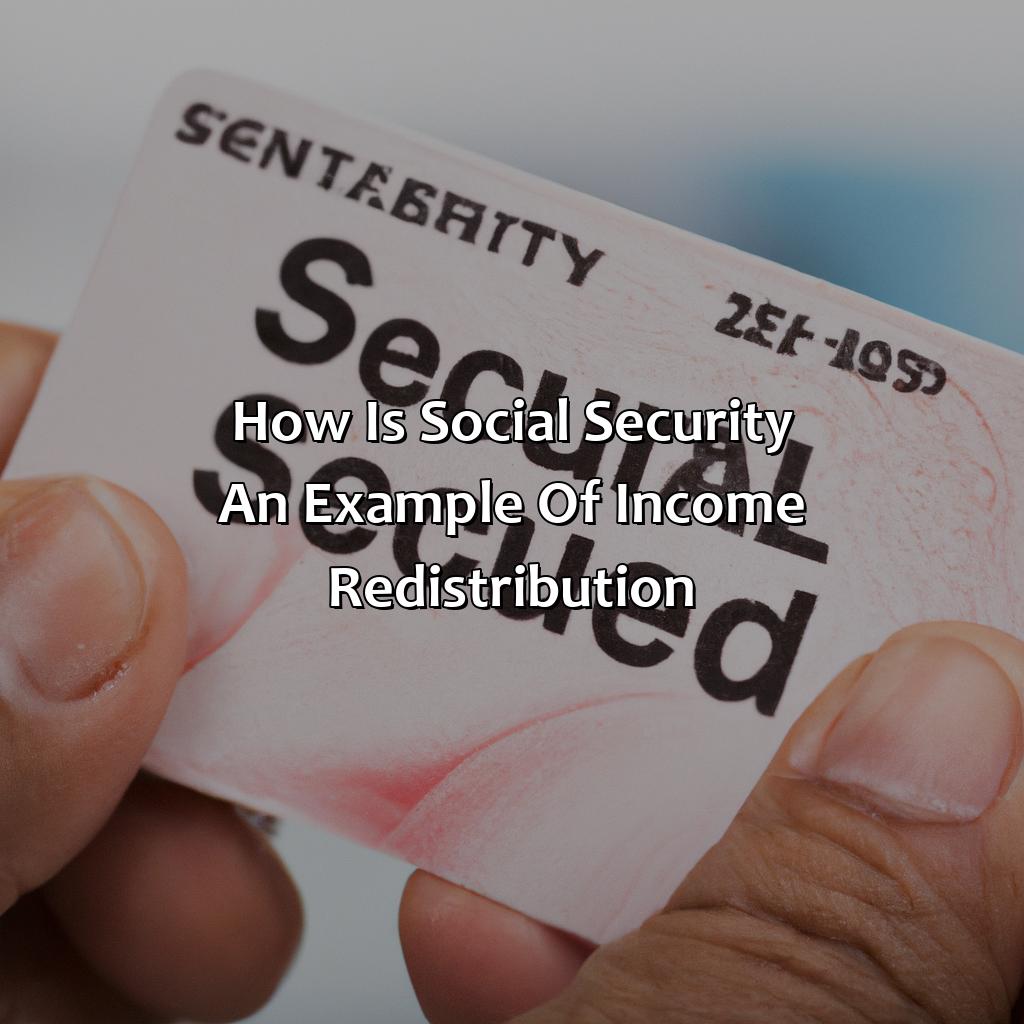How Is Social Security An Example Of Income Redistribution?
Key Takeaway:
- Social Security is an example of income redistribution: It is a program that collects taxes from workers and distributes benefits to retirees, disabled individuals, and their families. This system redistributes income from workers to those who are unable to work or have retired, with the aim of reducing poverty and ensuring basic economic security for all.
- Social Security programs offer numerous benefits: These include providing a reliable source of income during retirement, disability, or death, as well as protecting against inflation and market fluctuations. Social Security also helps to mitigate income inequality and reduce poverty rates among vulnerable populations.
- Criticisms of Social Security focus on its sustainability and distributional effects: Some argue that Social Security is financially unsustainable due to demographic changes and increasing costs, while others contend that the current system is regressive and provides insufficient support for low-income workers. Addressing these challenges will require careful consideration and policymaking to ensure the long-term viability and effectiveness of Social Security programs.
Are you struggling to understand how social security is an example of income redistribution? This article will dive into the details of how social security works and how it redistributes wealth and income. Discover the real impact of social security on income inequality and wealth.
Definition of Income Redistribution
Income Redistribution: A Professional Definition
Income redistribution refers to the transfer of wealth and income from the rich to the poor in a society through various economic policies that aim to reduce economic inequality. Such policies can include progressive taxation, social welfare programs, and government subsidies.
In particular, social security is a prime example of income redistribution. It is a social welfare program designed to provide financial support to individuals and families who are unable to support themselves, such as the elderly, disabled, and low-income earners. This program is funded by taxes on current workers and provides benefits to those who have reached retirement age or have become disabled.
In the United States, the Social Security Act of 1935 established the Social Security program as a means of income redistribution. The program provides a safety net for retired workers, their spouses and dependents, as well as disabled individuals and their families. This safety net ensures that those with lower incomes receive financial aid, while those with higher incomes are required to contribute more to support the program.
One suggestion for improving the effectiveness of income redistribution policies is to implement a guaranteed minimum income. This would provide a basic level of financial support to all citizens, ensuring that no one falls below the poverty line. Another suggestion is to increase funding for education and job training programs, which can help individuals acquire the skills needed to secure better-paying jobs.

Image credits: retiregenz.com by David Duncun
Social Security as Income Redistribution
To grasp Social Security as income redistribution, explore “Social Security as Income Redistribution“. There you’ll get a brief understanding of the various programs. You’ll also discover the advantages of Social Security and some critiques connected with the program.

Image credits: retiregenz.com by Harry Washington
Social Security Programs
Another interesting feature of Social Security is its progressive structure, which benefits lower earners the most. In fact, the more someone earns during their working years, the smaller the Social Security check they receive when they retire. This design allows for greater income equality and helps reduce poverty in retirement.
A common misconception about Social Security is that it is solely a retirement program. However, it also provides disability insurance benefits to those who experience a severe medical condition and cannot continue working. Additionally, survivors’ benefits are available to family members of workers who die before reaching retirement age.
According to the Social Security Administration (SSA), in 2021 an estimated 176 million people will pay into the program through payroll taxes and nearly 65 million beneficiaries will receive benefits.
(Source: SSA)
Social Security: because sometimes a little government intervention is the difference between retiring in peace or working till death.
Benefits of Social Security
Social Security: A Vital Resource Accessing the Basics of Comfort
Social Security serves as an essential way to ensure the socio-economic stability of individuals and society at large, especially seniors who often depend on regular support to meet their basic needs such as housing, healthcare, and food. Here are three points about how Social Security benefits society:
- Redistributes Wealth Equally: Social Security redistributes wealth from high-earning individuals to low-income families. The program ensures an equal distribution of income, mitigating inequality in society.
- Maintains Dignity in Retirement Years: Social Security ensures that seniors lead dignified and respectful lives during their retirement years without having to worry about meeting their basic needs or becoming a burden on others.
- Resolves Poverty: Social Security helps many needy families escape poverty while facilitating access to education, which is necessary for thriving communities.
Moreover, the current situation of retirees has become worse due to precarious living conditions and the rising costs of living. It is imperative that we focus on implementing policies such as Social Security that promote social welfare and economic justice for all members of our society.
Historically speaking, after World War II, President Roosevelt established Social Security as part of his New Deal vision. The program ensured people had decent livelihoods and equal opportunities by providing necessary resources in times of crisis like old age and unemployment.
Social Security: where the only thing more certain than death and taxes is criticism.
Criticisms of Social Security
Social Security Scheme is widely criticized for its flaws and inadequacies in catering to the needs of certain populations. The scheme’s single-dimension approach to cover disability, retirement, and death leaves many other requirements unaddressed.
Critics argue that Social Security disproportionately benefits higher-earning individuals while leaving behind lower-income groups. Moreover, since the formula used to calculate benefits is based on earnings history, people who have worked their entire lives and made modest earnings receive less money.
Furthermore, the administrative cost and inefficiency of Social Security have sparked concerns about its sustainability in the long run. Other concerns include an arbitrary benefit calculation process and inconsistent intergenerational payments.
To address these concerns, policymakers may consider a range of possible solutions such as increasing payroll taxes or reducing the program’s benefits. Another suggestion is creating private savings accounts for citizens to invest instead of relying solely on Social Security pensions.
Five Facts About How Social Security Is an Example of Income Redistribution:
- ✅ Social Security redistributes income from high-income earners to low-income earners through a regressive tax system. (Source: The Balance)
- ✅ Social Security provides more benefits to low-income earners than high-income earners, meaning the program helps to reduce income inequality. (Source: Center on Budget and Policy Priorities)
- ✅ Social Security also includes a means-tested program called Supplemental Security Income (SSI) that provides additional support to low-income individuals who are elderly or disabled. (Source: Social Security Administration)
- ✅ The Social Security Administration reports that over 64 million people received Social Security benefits in 2020. (Source: Social Security Administration)
- ✅ Social Security has been a critical source of income for many retired individuals and has helped to reduce poverty rates among seniors. (Source: AARP)
FAQs about How Is Social Security An Example Of Income Redistribution?
How is Social Security an example of income redistribution?
Social Security is an example of income redistribution because it takes money from workers in the form of payroll taxes, and then redistributes that money to retired individuals, disabled workers, and surviving family members.
How does the Social Security system work?
Workers contribute a percentage of their income to the Social Security Trust Fund through payroll taxes. Then, when they reach retirement age or become disabled, they are eligible to receive benefits from the Trust Fund.
What are some criticisms of the Social Security system as a form of income redistribution?
Some critics argue that the Social Security system creates a disincentive to work and save for retirement, since workers may rely too heavily on Social Security benefits. Others argue that the system is unsustainable and will ultimately run out of money.
Who is eligible to receive Social Security benefits?
Retired individuals, disabled workers, and surviving family members of deceased workers are all eligible to receive Social Security benefits.
What factors determine the amount of Social Security benefits a person can receive?
The amount of Social Security benefits a person is eligible to receive depends on their lifetime earnings, as well as the age at which they start receiving benefits.
Is Social Security the only form of income redistribution?
No, there are many other forms of income redistribution, including progressive taxation, welfare programs, and government subsidies for specific industries.


